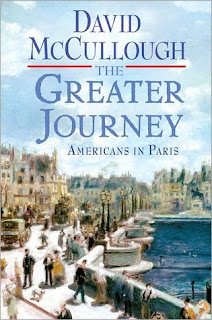The Greater Journey is the enthralling, inspiring—and until now, untold—story of the adventurous American artists, writers, doctors, politicians, architects, and others of high aspiration who set off for Paris in the years between 1830 and 1900, ambitious to excel in their work.
After risking the hazardous journey across the Atlantic, these Americans embarked on a greater journey in the City of Light
Some of my favorites stories/excerpts:
· James Fenimore Cooper became a writer after one day while reading a novel to his wife, became disgusted with the book, threw it aside and said he could write a better book, whereupon he set to work.
· Samuel Morse was an accomplished artist/painter before he invented the “Morse Code” and the telegraph.
· Charles Sumner, who was in Paris
· Harriet Beecher Stowe went to Paris Hawthorne
· Henry James came to Paris
· One of the more prominent people in the book was the mostly unknown Elihu Washburne, who was the minister to France from the United States
· The engineer Eiffel of the ‘tower’ fame was the same person who designed the locks of the Panama Canal .
· Finally, there was actually a “Mormon Mention” in the book. During the late 1880’s there was a huge influx of artists who came to France Temple at Salt Lake City
4 Stars (Rated PG – for a few graphic stories concerning medical practices and the Siege of Paris)

No comments:
Post a Comment